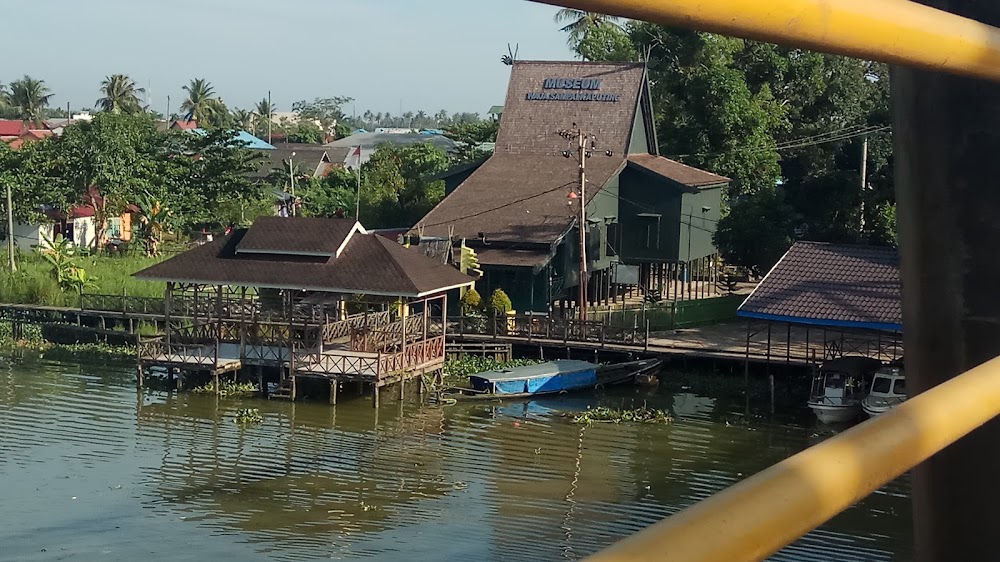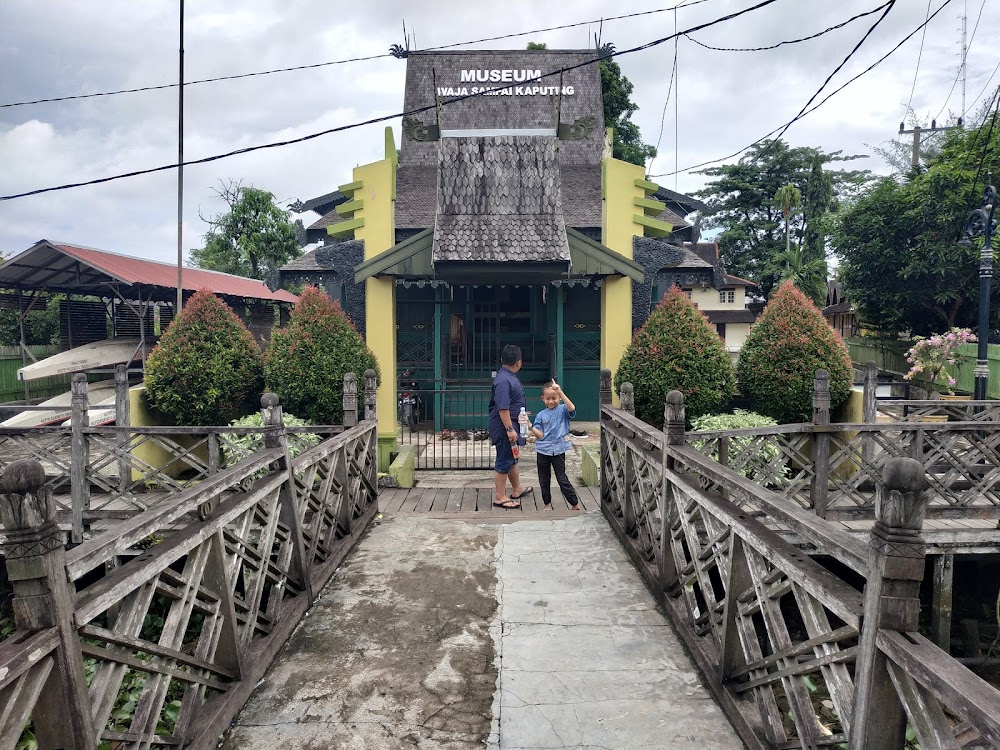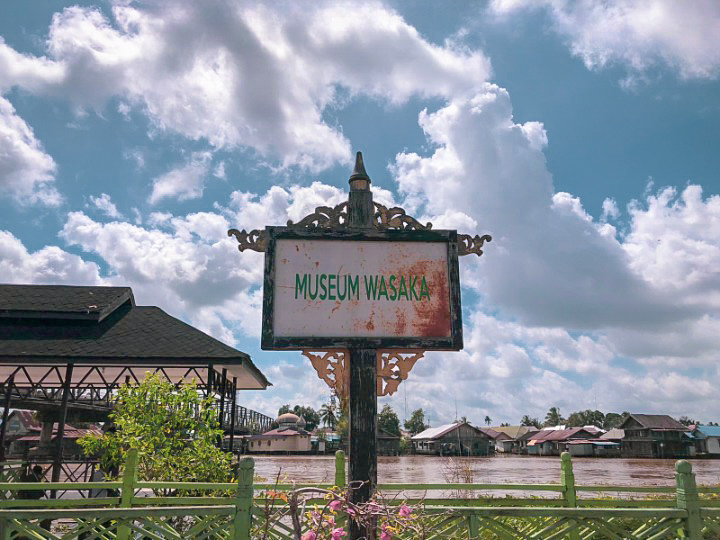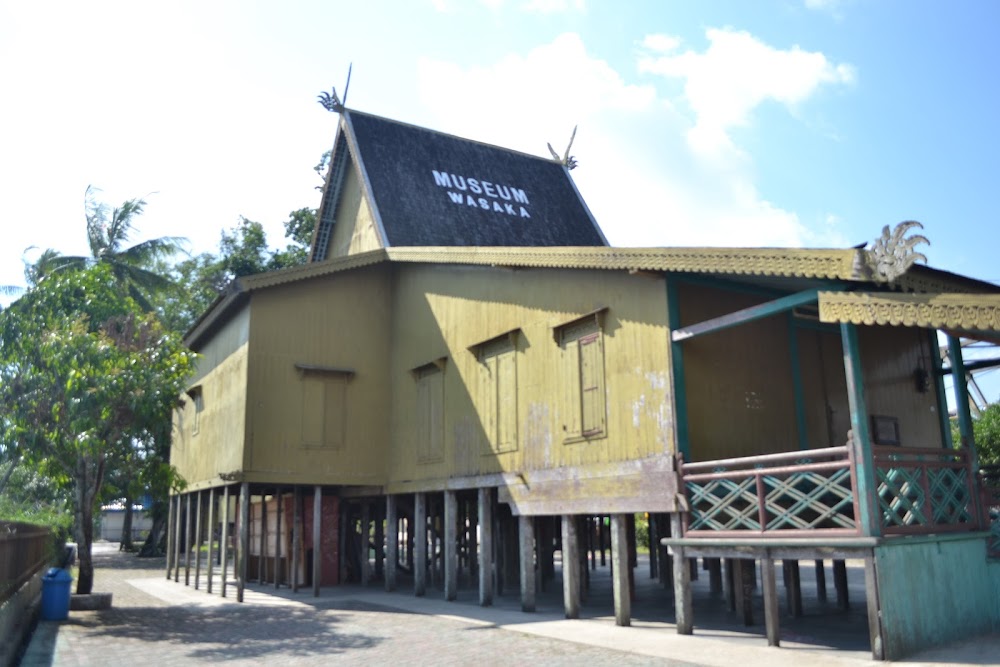Wasaka Museum (Museum Wasaka)
Overview
The WASAKA Museum is a vital cultural landmark situated in Banjarmasin, the capital city of South Kalimantan, Indonesia. Revered by locals, this museum captures the rich tapestry of history, culture, and heritage that defines South Kalimantan.
The name "WASAKA" is an acronym derived from "Waja Sampai Ka Puting," a phrase in the Banjar language meaning "steadfast until the end." This powerful expression symbolizes the resilience and determination of the people of South Kalimantan, reflecting their historical struggles and triumphs.
Housed in a traditional Banjarese wooden house, known as a "Rumah Banjar" or "Rumah Bubungan Tinggi," the WASAKA Museum itself is a remarkable historical artifact. This architectural style features a high, steeply pitched roof adorned with ornate carvings. Constructed in the early 19th century, it showcases the exceptional craftsmanship of the Banjar people and serves as a fitting backdrop for the museum's diverse exhibits.
Visitors to the museum can explore a variety of displays that highlight different facets of life and culture in South Kalimantan. One of the main attractions is the collection of historical photographs and documents that chronicle the region's past, including its struggle for independence from colonial rule. These exhibits provide a poignant glimpse into the lives of local heroes who fought valiantly for their people's freedom.
Another notable feature is the exhibition of traditional weapons, such as the "Mandau" or "Parang Ilang," a type of machete used by the Dayak people, the indigenous inhabitants of Kalimantan. The museum also showcases traditional costumes, musical instruments, and everyday household items, offering visitors a comprehensive view of both Banjar and Dayak cultures.
A highlight of the WASAKA Museum is its section dedicated to traditional Banjar textiles, particularly the "Sasirangan." This beautiful fabric, dyed through a resist-dyeing technique, features intricate patterns and holds significant cultural importance. The museum not only displays these exquisite textiles but also conducts demonstrations and workshops for those keen to learn the craft.
The establishment of the museum was a community-driven initiative aimed at preserving and promoting the region's cultural heritage. Local government bodies, historians, cultural experts, and community members worked collaboratively to gather artifacts, curate exhibits, and restore the Rumah Banjar that houses the museum. This meticulous restoration process ensured the preservation of original architectural elements while enhancing the building's safety and accessibility for visitors.
In addition to its permanent exhibits, the WASAKA Museum regularly hosts temporary exhibitions, cultural events, and educational programs designed to engage the local community and attract tourists. Workshops on traditional crafts, storytelling sessions, and cultural performances create immersive learning experiences for visitors of all ages.
The museum staff, comprising local historians and cultural enthusiasts, are always available to provide guided tours, answer questions, and share captivating stories about the region's history and traditions. Their passion and dedication ensure that every visitor leaves with a deeper understanding and appreciation of South Kalimantan's rich heritage.
Ultimately, the WASAKA Museum stands as a testament to the resilience and cultural richness of the people of South Kalimantan. Through its diverse exhibits and programs, the museum continues to educate, inspire, and connect individuals with the traditions and history of this vibrant region. A visit to the WASAKA Museum is not merely a journey through the past but a celebration of the enduring spirit of the Banjar and Dayak cultures.









